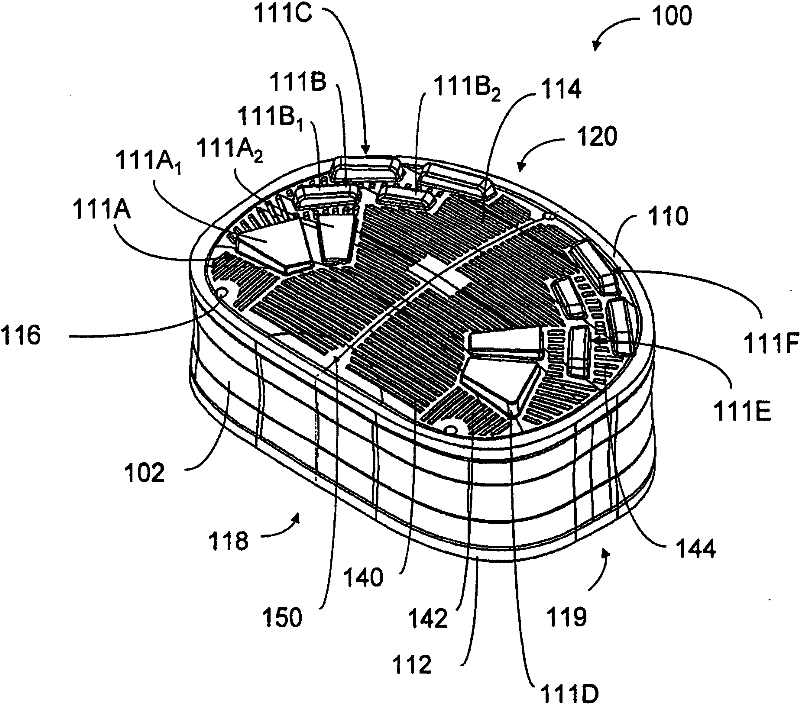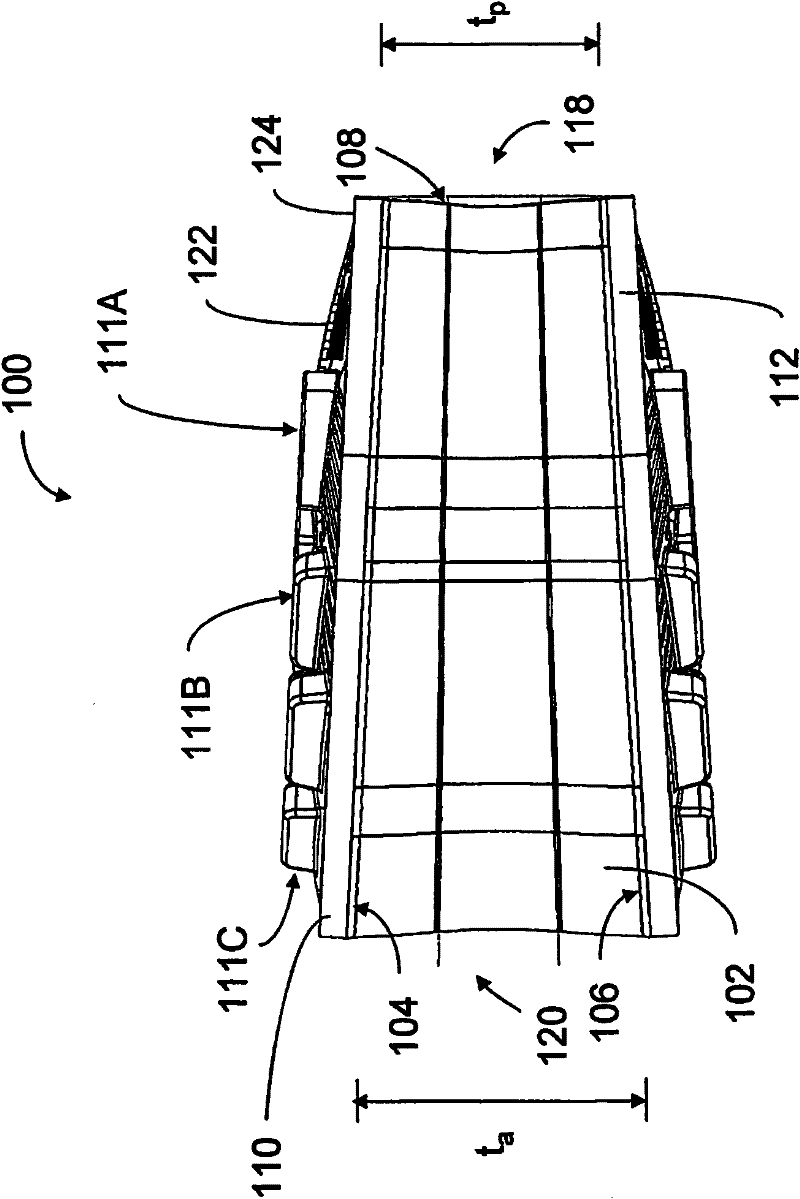Artificial spinal disc implant
A technology of implants and spinal discs, applied in the direction of spinal implants, joint implants, joint implants, etc., can solve the problems that cannot be manifested, the implants are prone to failure, and the implants cannot effectively execute the natural spine. Disk and other issues
- Summary
- Abstract
- Description
- Claims
- Application Information
AI Technical Summary
Problems solved by technology
Method used
Image
Examples
Embodiment Construction
[0022] The present invention provides an artificial spinal disc implant that can be implanted between adjacent vertebrae in the spine to replace, repair or augment a natural spinal disc. A spinal disc implant may be characterized by one or more biomechanical properties that approximate those of a natural spinal disc. The implant can also be designed to be sufficiently fixed to the vertebrae so that it can function long-term in vivo.
[0023] The spinal disc implant may include one or more end plates. The endplates may have an outer surface that includes fixation elements designed to fit into corresponding features (e.g., recesses) on the vertebrae to secure the disc between the vertebrae between. The fixation element may be configured and constructed to provide greater resistance to forces acting to dislodge the disc from its position between the vertebrae. For example, fixation elements may be designed to have certain preferred dimensions and / or may be positioned in certai...
PUM
 Login to View More
Login to View More Abstract
Description
Claims
Application Information
 Login to View More
Login to View More - R&D Engineer
- R&D Manager
- IP Professional
- Industry Leading Data Capabilities
- Powerful AI technology
- Patent DNA Extraction
Browse by: Latest US Patents, China's latest patents, Technical Efficacy Thesaurus, Application Domain, Technology Topic, Popular Technical Reports.
© 2024 PatSnap. All rights reserved.Legal|Privacy policy|Modern Slavery Act Transparency Statement|Sitemap|About US| Contact US: help@patsnap.com










